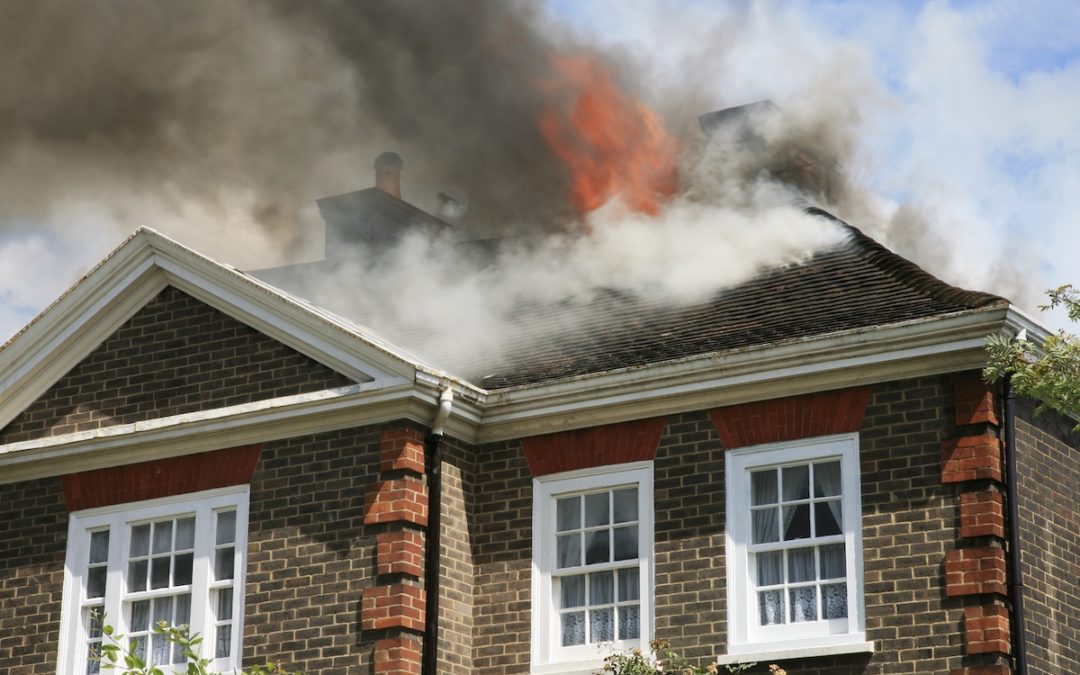Imagine this: There was a small fire contained to just the kitchen, quickly extinguished. But the smell of the smoke is overpowering! No matter what you try, it just won’t come out of anything! And it’s throughout the whole house. So you call for professional smoke damage restoration services. But what is going on with that smoke smell? All fires are unique, with distinct characteristics and challenges. For starters, each aspect creates a broad spectrum of variables that tests even the best of mitigation companies, including the source, the intensity, the combustion rate, and the physical arrangement of the structure. When a fire breaks out, it immediately begins to change the environment of the structure. When the light has sufficient fuel and adequate air supply, it consumes materials as it burns—the more explosive the fuel source, the more complete the consumption of the fire. Products of Incomplete Combustion (PICs) are how professionals refer to soot tags, residues, and remains of materials that could not be consumed entirely by the fire. Several factors control the volume of soot, how far it spread, and its penetration.
Heat affects the way smoke damage restoration services providers mitigate damage.
In most cases, the higher the heat, the higher the combustion rate, and usually, the richer the air is with oxygen during a fire. Professionals refer to these blazes as “dry” fires. These fires consume products more thoroughly, and the intense heat results in a high degree of conversion from a solid mass to energy—hot gasses. They reduce natural material to dry soot (mainly the element “carbon”) that is easier to remove than many other residues. These PICs are distributed and deposited, allowing the mitigation technician to collect them with dry removal techniques, such as vacuuming. Heat always causes expansion. Even surfaces that you would think would be easy to clean are now permeated with residues and odors.
Air circulation can move soot particles all over – creating “soot tags.”
Heat moves toward cold. As areas increase in temperature, they seek out cooler spaces to find an atmospheric equilibrium. Even if the heating and air conditioning system is not operating, the smoke/soot will still travel throughout the structure. High vapor pressure will force the residues into areas often thought of as sealed, such as the inside of a freezer. As air circulates, it carries PICs and odor-charged molecules. This accounts for the need to clean and deodorize some distance from the source of the fire. As particles combust, they become charged. And they form “soot tags” in areas of low-circulation. Clients often believe that the smoke attached itself to spider webs they had before the fire. Quite the contrary—soot tags are new, unique chains of soot that gather in areas of low concentration.
Oxygen-rich environments make fires consume materials more rapidly.
Of course, if you don’t put out the fire quickly, it will cause considerably more damage. Oxygen-poor environments are a different situation altogether. A closed door might appear to isolate a fire from the rest of the house. But, once the fire begins to consume materials in the room, it needs additional oxygen to continue. If the open flame cannot obtain more oxygen, it begins to weaken. “The result is a high percentage of Products of Incomplete Combustion. These are much “oilier” and much more difficult to remove. If the fuels being burned are not natural, you add additional PICs in very high volume, resulting in a higher concentration of soot. The soot of these fires is more difficult to remove than the soot of hotter, oxygen-rich fires. Restoration professionals sometimes refer to these fires as “wet fires.”
Odors from a fire also vary.
When products in a fire burn, the odors join the oxygen molecule in the air, we breathe. Undoubtedly, PICs create an odor, but in some instances, the scent is quite strong even when the PICs are hard to find. Consider, for example, the common “I left a turkey in the oven and went to the store” fire. When the occupants return, the odor of the burnt turkey is everywhere, but there is very little soot. Here is the problem: that 20-pound bird is now 3 pounds of ash! So, where did it go? Everywhere! Even the clothes in the back closets contain odors. This indicates that protein fires are one of the most difficult to mitigate because of the pervasiveness of the smell. The smoke damage restoration service provider treats all the nooks and crannies to ensure that all smoke particles are removed and all surfaces deodorized. The best solution to these problems is to call a trained, professional mitigation company to address these issues. They have the trained personnel, state-of-the-art professional equipment, and the right EPA-approved products to provide excellent cleaning and odor control processes.
For professional smoke damage restoration services, call Purofirst of Victorville.
Successful mitigation and restoration of fire depend primarily on having trained professionals to provide these services. Contact Purofirst at (760) 245-5545 for 24/7 emergency service provided by professional, well-trained, and compassionate technicians specializing in restoring fire and smoke damages.



Recent Comments